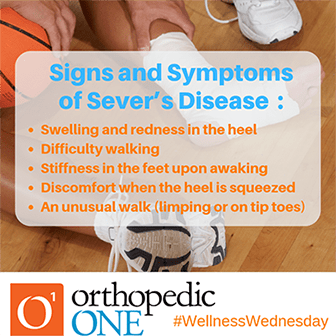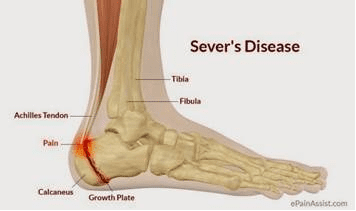Growing Pains: Detecting and Overcoming Sever’s Disease
Typically occurring during the growth spurts of early puberty, this condition is most commonly seen in girls ages 8-13 and boys ages 10-15. During this time, the heel bone sometimes grows faster than the leg muscles and tendons, causing them to become tight and overstretched. This makes the heel less flexible and puts pressure on the growth plate. Over time, repeated stress on the already tight tendons damages the growth plate, causing the swelling, tenderness and pain associated with Sever’s Disease.

Sever’s Disease can occur in any child, but the following factors may increase their chances of developing this condition:
- A pronated foot (a foot that rolls in at the ankle when walking), which causes tightness and twisting of the Achilles tendon, thus increasing its pull on the heel’s growth plate.
- A flat or high arch, which affects the angle of the heel within the foot, causing tightness and shortening of the Achilles tendon.
- Short leg syndrome (one leg is shorter than the other), which causes the foot on the short leg to bend downward to reach the ground, pulling on the Achilles tendon.
- Being overweight or obese, which puts weight-related pressure on the growth plate
Signs and Symptoms
The most obvious sign of Sever’s Disease is pain or tenderness in the back of the heels. The pain also might extend to the sides and bottom of the heel, ending near the arch of the foot. Keep an eye out for:
- Swelling and redness in the heel
- Difficulty walking
- Stiffness in the feet upon awaking
- Discomfort when the heel is squeezed on both sides
- An unusual walk, such as walking with a limp or on tiptoes to avoid putting pressure on the heel

If you suspect that your child may have Sever’s Disease, Orthopedic ONE’s Sports Medicine physicians and Sports Medicine Hotline are great resources. With proper care, most cases of Sever’s Disease are alleviated within 2 weeks to 2 months. The sooner Sever’s Disease is diagnosed, the quicker and easier recovery will be, with most kids making a full recovery and returning to the activities they enjoy once they are symptom free.
Source: kidshealth.org